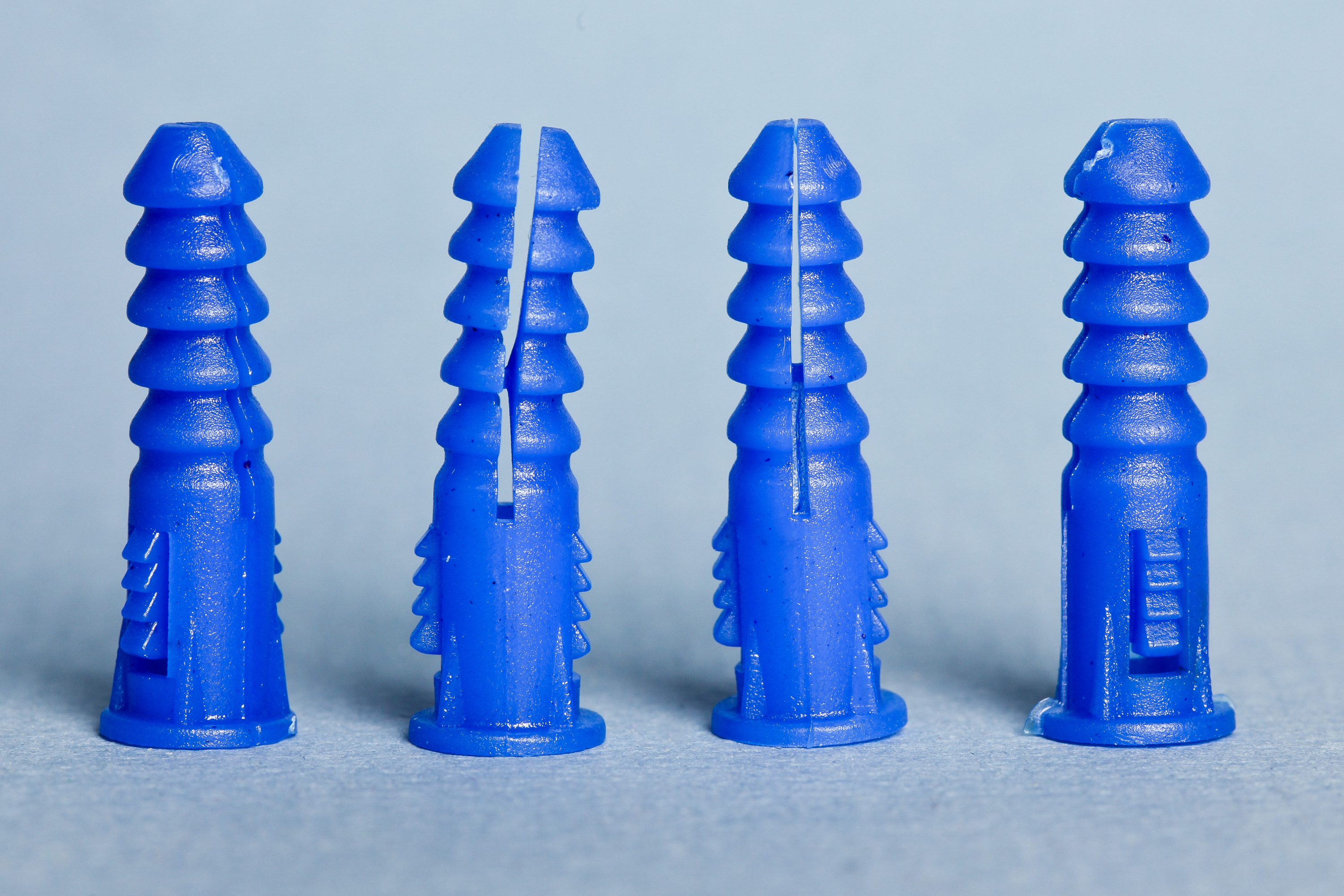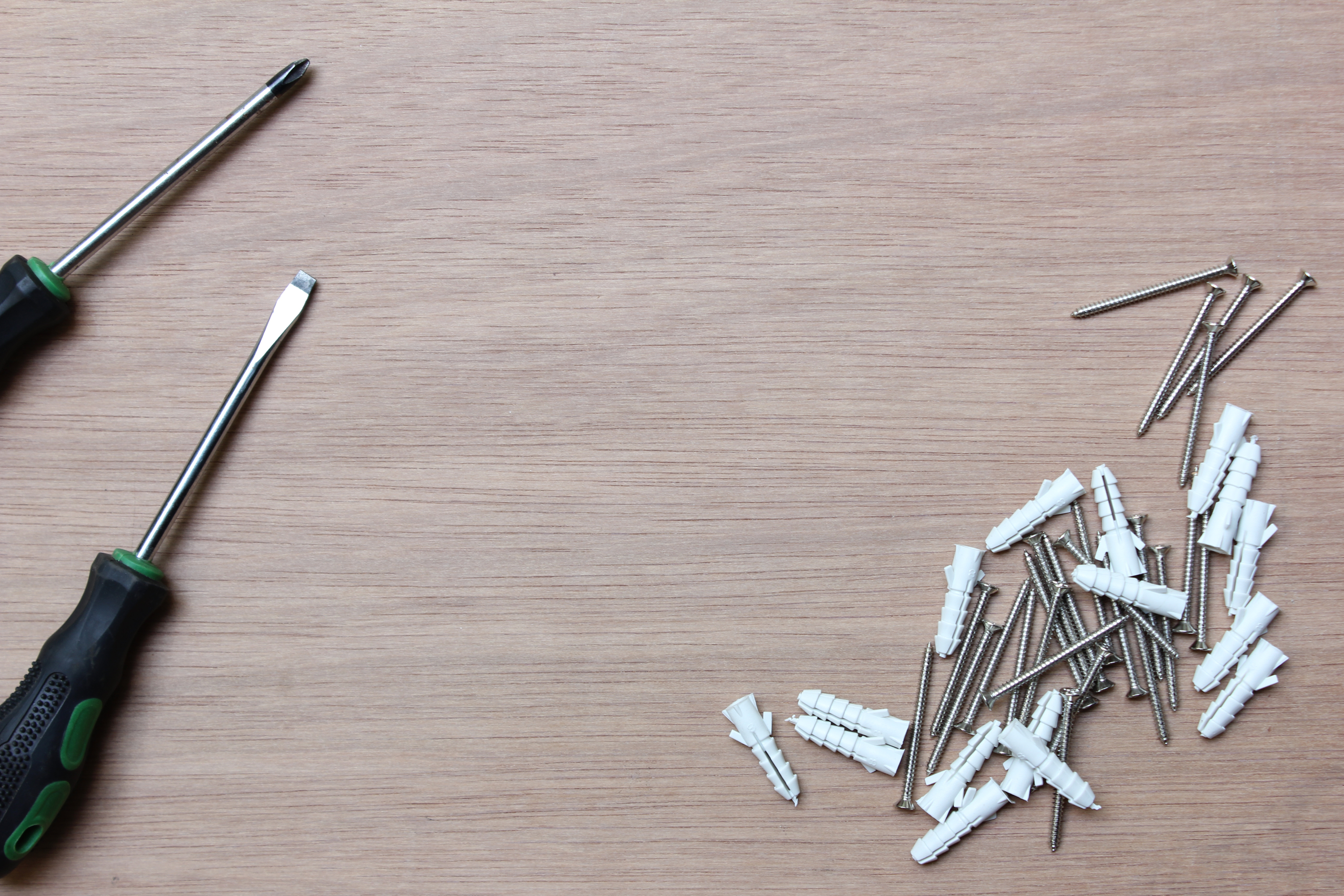For a long while, I never thought that I needed to use drywall anchors. I mean, I was only hanging up picture frames and heavy (ish) wall decor! However, I hung a heavy mirror in my home a few years ago without the help of anchors, and ended up absolutely destroying my drywall!
Whether you’re hanging a heavy mirror, installing shelves, or mounting a TV, drywall anchors ensure that your fixtures stay securely in place, preventing potential disasters.


I use anchors for everything now! And guess what? The process is surprisingly easy! Use my tutorial below to install drywall anchors in your own home today.
Whether you’re hanging a heavy mirror, installing shelves, or mounting a TV, drywall anchors ensure that your fixtures stay securely in place, preventing potential disasters.


How Drywall Anchors Work
Drywall is made from gypsum material with a paper backing. It’s great for walls but not good for mounting heavy items with screws. This is where a drywall anchor comes in. It works by drilling a pilot hole in the drywall and placing the anchor in the hole and it will expand at the end of the wall creating a secure point.
There are several different types of drywall anchors.
Types of Drywall Anchors
There is a wide variety of drywall anchors available, each designed for specific purposes. Let’s explore the most common types:
2.1 Expansion Anchors Expansion anchors, also known as sleeve anchors, are ideal for heavy-duty applications. They consist of a cylindrical sleeve, a screw, and a nut. When you tighten the screw, the sleeve expands within the drywall, creating a secure grip.
2.2 Toggle Bolts Toggle bolts are another robust option for hanging heavy items. They consist of a bolt with spring-loaded wings. When inserted through a hole in the wall, the wings spring open, providing substantial support behind the drywall.
2.3 Plastic Anchors Plastic anchors, often referred to as conical anchors, are versatile and suitable for light to moderate loads. They are easy to install and work by spreading out behind the drywall when a screw is driven into them.
2.4 Self-Drilling Anchors Self-drilling anchors, also known as threaded drywall anchors, are user-friendly and require no pre-drilling. These anchors have sharp tips that penetrate the drywall as you screw them in, providing secure support for lightweight fixtures.
2.5 Winged Plastic Anchors Winged plastic anchors are designed for medium-weight items. They feature two wings that open up behind the drywall as you tighten a screw into them, creating a sturdy connection.
2.6 Molly Bolts Molly bolts, or hollow wall anchors, are excellent for hanging medium to heavy objects. They consist of a screw, a metal sleeve, and a plastic or metal collar. When the screw is tightened, the sleeve expands behind the drywall, ensuring a secure grip.
2.7 Snap Toggles Snap toggles are effective for heavy-duty applications and are easy to install. They consist of a spring-loaded toggle and a plastic strap. As you insert the toggle through a hole in the wall, it springs open, providing strong support.
2.8 Threaded Anchors Threaded anchors, also known as drywall screws, are simple and widely used for light to moderate loads. They are screws with coarse threads designed to bite into the drywall and hold fixtures securely.
What Tools and Materials You Need
-A set of threaded drywall anchors (make sure they can support the weight you plan to put on them!)
-A screwdriver (you don’t even need an electric one for this project!)
How To Use A Drywall Anchor
Step One
First, determine where on your wall to place the anchors. Mark off the area on your drywall with a pencil or a washable marker. The first step is to drill a pilot hole to insert the anchor. Use a drill bit that is smaller than the drywall anchor. It should be in the instructions in the anchor package.


Step Two
Using a hand-held screwdriver, place the point of the drywall anchors into the pre-marked dots on your drywall. Press hard and screw them in with the screwdriver, applying even pressure throughout the process to firmly attach your anchors.
Step Three
Once the drywall anchor has been completely attached, you can install your wall hanging or mirror. Screw your mirror or wall hanging into the wall by placing it through the hole of the drywall screws.
And that’s it! You’re done! Wasn’t this DIY project super easy? Installing drywall anchors will help keep your drywall looking beautiful and undamaged by providing a sort of “buffer” between your wall hanging and the wall. Just using drywall anchors can help protect your home from costly damages.


Additional Resources
HomeDepot Drywall Anchors:
https://www.homedepot.com/b/Hardware-Fasteners-Anchors/Drywall/N-5yc1vZc2e5Z1z1r7tc
Amazon Drywall Anchors:
https://www.amazon.com/s?k=drywall+anchors+and+screws+kit&ref=sr_nr_p_rk_sp_0
